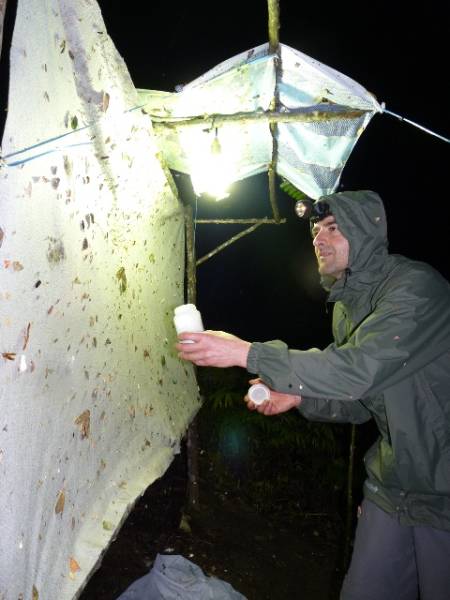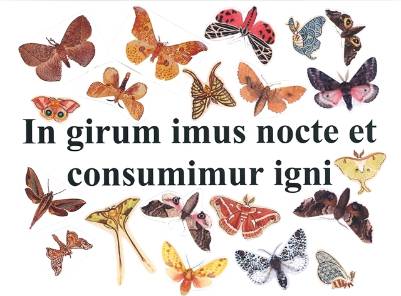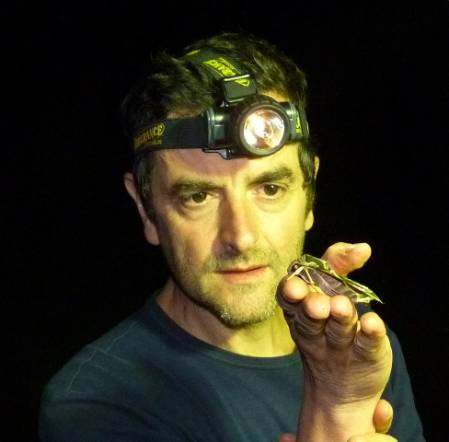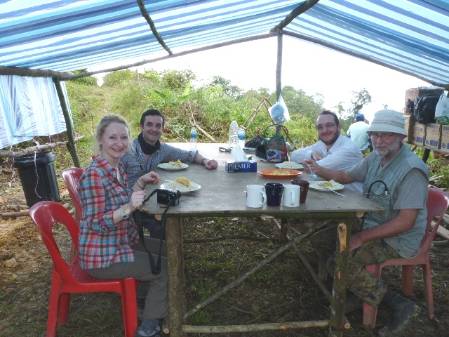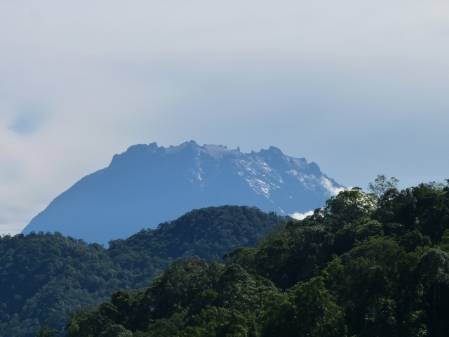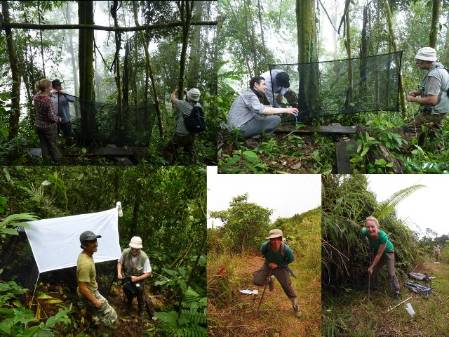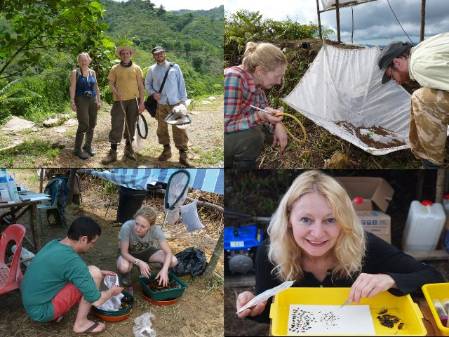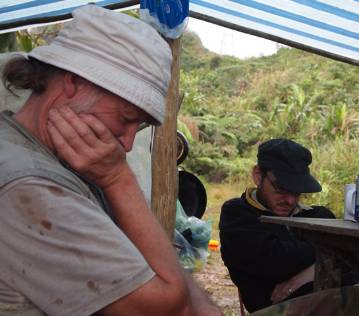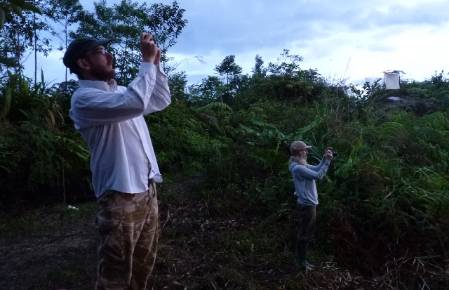In my last post, I described how and why I was in Borneo. Time now to feature some of the moths I collected...
First, let me illuminate you on light trapping as this is one of the most favoured ways of collecting moths, and indeed the method we have used to collect the majority of the ca. 2700 specimens of Lepidoptera we brought back from this trip.
Moths seem to be more attracted by UV light than by normal tungsten bulbs and there are different devices used to lure them. A functional and unsophisticated device is a white sheet hanging on a vertical support with a UV light bulb suspended in front of it. One just stands next to it and enjoys the flying critters attracted by the light from the dark surroundings.
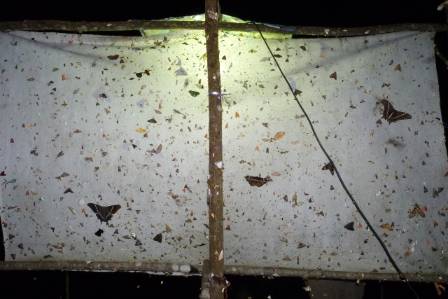 One of the 4 moth traps at the camp. We would spend hours every night, checking each of them in turn
One of the 4 moth traps at the camp. We would spend hours every night, checking each of them in turn
A popular (and more expensive) method is to use designed light traps, such as the Robinson, Skinner and Heath traps. They still have UV bulbs but they are contained traps. There is a box under the light bulb where the moths fall after being attracted and confused by the light, egg cartons are placed inside the trap to create hiding places for the moths.
The advantage of using these types of light traps is that there is no need to stand around them because the moths that have fallen inside often remain in the trap, and are found the morning after, resting under the egg cartons.
The Robinson Moth Trap in the Wildlife Garden of the Museum. My colleague, curator Martin Honey, has been monitoring moths in the Garden since 1995 and so far 600 species have been recorded in this modest but vital green space in Central London
Designed light traps are generally used in temperate areas. On the other hand, in the tropics the white sheet is the favoured method because, in these regions, there are many more species of moths that are often more numerous and larger than the ones found in temperate localities. Therefore, it is much better to use a larger surface to collect them.
Collecting moths at one of our light traps in Borneo
It is still uncertain why many species of moths - and indeed the majority of species of insects - are attracted to artificial light sources, but I won’t delve in conjecturing here as a simple search in the web will give you plenty of hypotheses, none of which has been so far validated. However, below is a series of photos of some of the moths that were visiting our moth traps… absolutely gorgeous stuff (for me at least!)
Marapana flavicosta a moth of the Erebidae family with very long labial palps. This moth has been recorded only in Borneo in montane forests between 1200 and 1900 m. We have the type* of this species here in our Museum!
* When a new organism is described and named, the specimen (or specimens) on which the author based the description becomes the 'type' (or types) for the species. Our beetler Beulah has a fun post about this here
This pretty little moth that reminds me of a clown is very likely Cyana costifimbria, or a species very close to it. It also belongs to the Erebidae.
Acherontia lachesis, the oriental death's-head hawkmoth. An awe-inspiring moth and a skilled honey stealer! The adults (and even the pupae!) of the three known species of hawkmoths squeak when disturbed. Hear one here.
Barsine roseororatus - another erebid moth - frequently found in the forested and disturbed habitat of Borneo and Peninsular Malaysia. The type of this species is also here in the Museum!
Callidrepana argenteola, a moth in the Family Drepanidae (the hook-tip moths). The caterpillar of this species resembles a bird dropping but unfortunately I could not find one to photograph. Again, we have the type specimen of this species in our collections.
Kunugia basinigra belongs to the family Lasiocampidae, commonly known as eggars, snout or lappet moths and this little fellow has certainly a snout to be proud of.
The Tropica Swallow Tail moth (Lyssa zampa), an uraniid moth distributed from North East Himalaya to South China and Thailand, also Philippine, Sulawesi, Borneo and the Malayan Peninsula. This species is relatively common particularly in montane forest, where it’s been recorded as high as 2600m on Mount Kinabalu. The caterpillar of this species feeds on plants of the Genus Endospermum in the family Euphorbiaceae. The type specimen of this species was also deposited in our Museum.
Tarsolepis sommeri, a moth in the family Notodontidae (the prominents and kittens), is relatively well distributed in various lowland forest areas of the Oriental region. The moth looks rather prickly with those amazing tufts of reddish scales and spiky hairs at the base of the abdomen… I feel itchy just looking at them! In some species of the Notodontidae family the females are known to cover their batch of eggs with scales and hairs from the abdominal tuft, to give them protection. This moth has been observed feeding from mammalian lachrymal secretion in Peninsular Malaysia.
I’m going to leave you with a collage I created with some drawings (not mine) of moths and an outstanding palindrome (a phrase that reads the same way in both directions) I found on the web. The palindrome is in Latin and translates: “We wander in the night, and are consumed by fire”, which I thought fitted particularly well with the subject of this post.
“We wander in the night, and are consumed by fire”
I hope you have enjoyed reading, and marvelled (as we did!) at the various amazing moths we encountered in Borneo.
I shall feature some more photos of nice invertebrates in my next post.
Thanks for reading and see you then.



